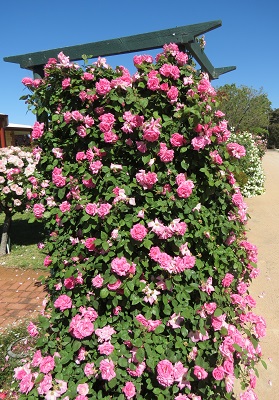 There is perhaps no more breath taking sight in the world of roses than a climbing rose in full bloom growing against a fence or wall, or over a pergola or archway. Climbing roses are easy to grow and apart from a couple of differences when it comes to pruning time, are grown much the same way as any other type of rose. And like any other types of roses, there is a wide variety of habits, colours and flower forms to choose from and many are also scented as well.
There is perhaps no more breath taking sight in the world of roses than a climbing rose in full bloom growing against a fence or wall, or over a pergola or archway. Climbing roses are easy to grow and apart from a couple of differences when it comes to pruning time, are grown much the same way as any other type of rose. And like any other types of roses, there is a wide variety of habits, colours and flower forms to choose from and many are also scented as well.
Climbing roses are very versatile in the landscape and their use of vertical space makes them great for smaller areas, leaving the ground space to be used for other plants. There is a range of growth habits for climbing roses from those good for smaller areas through to those for fences, walls and archways through to large monsters that will cover a shed or grow into a tree. Other climbing garden plants can be grown in combination with climbing roses, Hybrid clematis are a stunning combination but be careful that the companion doesn’t overtake the rose.
The cultural requirements for climbing roses are much like any other rose apart from pruning and training them and this is where most problems occur. Don’t treat your climbers like a bush rose and cut them back hard! The plant will spend the next season replacing the growth at the expense of flowers and you will wonder why it is not performing well. Rather than cut the canes back hard, leave them and train into position according to where they are growing.
If they are against a fence or wall, train into a fan shape with the newer canes at the top of the fan and older ones at the bottom. As new canes are produced, move the older ones down and remove the old ones at the bottom. On the other hand, if you have a climber growing vertically, then all the flowers will appear at the top. One way to overcome this is to stagger the heights of the canes so you have flowers lower down.
New growth on climbers also needs to be tied back otherwise it tends to snap off in strong wind and catches against things. Use soft ties that allow some movement is a good idea as they won’t dig into the canes.
Climbing roses can be roughly divided into three categories:
Modern climbers – Those climbers bred since the middle of last century. Over this time, rose breeders have extended the range of colours available and improved aspects like disease tolerance and flower power. Many are also fragrant.
Some modern climbers are climbing sports or mutations of bush roses, the well known ‘Climbing Iceberg’ being the best example in New Zealand.
Old Fashioned Climbers – Those bred in the earlier part of last century and earlier. They have withstood the test of time and are well worth growing, even though some only flower once during the season. Many are large growers but there are some suitable for smaller gardens.
Miniature or Patio Climbers – Small flowers on generally smaller and more contained plants, although some can get as big as a full size climber. Have become popular in the last 20 years in New Zealand with many from UK rose breeder Chris Warner doing especially well.
Some good performing climbing roses are
Modern Rose Climbers
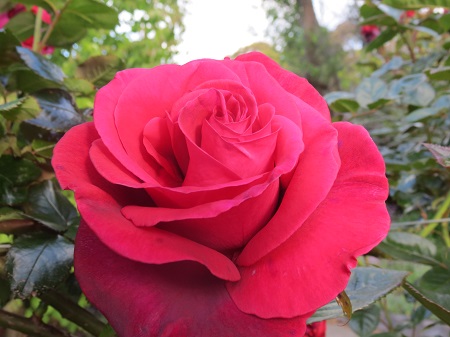
‘Red Flame’ – Dusky red scented blooms. Strong grower with very glossy foliage.
‘All My Love’ – Pale pink blooms. A compact grower with good health.
‘Cherry Kisses’ – Cherry pink blooms in clusters. Good health.
‘Compassion’ – Salmon pink blooms with a strong scent. Vigorous grower.
‘Fourth of July’ – A mass of red and white striped blooms. Fragrant.
‘Golden Future’ – Creamy yellow blooms, sweetly scented. Healthy.
‘Golden Gate’ – Golden yellow blooms. Super healthy and easy to grow
‘Sky Tower’ – Hot pink blooms in clusters. Large glossy green foliage
‘Sundancer’ – Orange blooms with a yellow reverse, slightly scented.
‘Uetersen’ – A smaller grower with masses of frilly pink blooms.
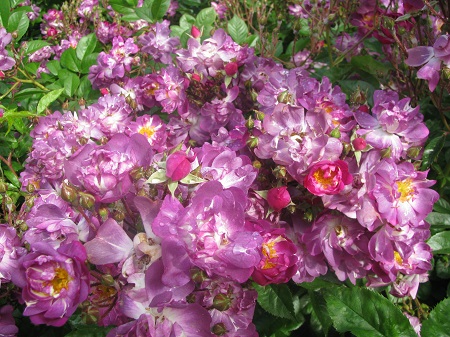
Old Fashioned Climbers
‘Albertine’ – Scented coppery pink blooms, once blooming. Very vigorous grower.
‘Crepuscle’ – Masses of apricot scented blooms, repeats blooms.
‘Mme Alfred Carriere’ – Richly fragrant white blooms, mostly in spring with a scattering throughout summer.
‘New Dawn’ – Silvery pink blooms, scented with good repeat bloom.
‘Veilchenblau’ – Masses of small purple – violet blooms, scented. Once flowering.
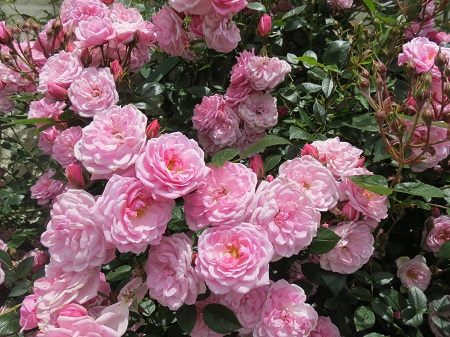
‘Zephrine Drouhin’ – Rich pink blooms, scented and repeats well. Almost thornless
Patio Climbers
‘Dusky Dancer’ – Rich red blooms in large clusters. Can also be grown as a shrub
‘Good as Gold’ – Well formed blooms of pure yellow on a medium sized plant.
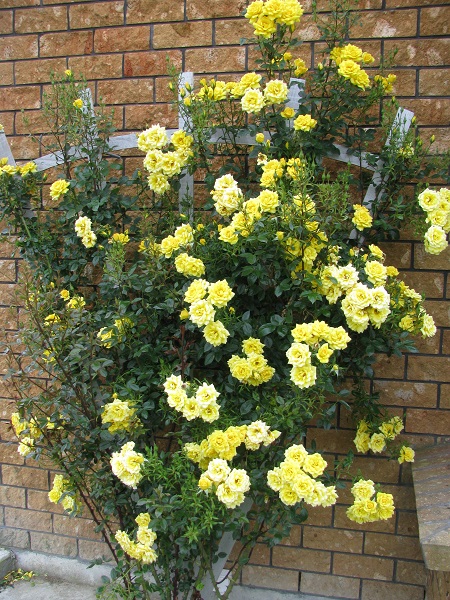
‘Jeanne Lajoie’ – An older variety with masses of small pink blooms.
‘Sugar Plum’ – A vigorous grower with small mauve purple blooms.
‘Taffeta’ – Quartered blooms of creamy white with a good scent.
In the Rose Garden for July
- It’s pruning time all month and into August. Once pruned, give the soil a forking over and pick up any fallen debris. Free Rose Pruning demonstrations are being around New Zealand by local rose societies, see the NZ Rose Society for details.
- Continue to plant new seasons roses. If the soil is too wet, you can either hold it in the container it was purchased in or if bare root, heal into a corner of the garden.
- Get a winter clean up spray of copper applied to your roses but leave it a few days after pruning.
By Hayden Foulds
Hayden also serves as Deputy Chairman of the World Federation of Rose Societies Rose Trials Committee amongst other rose endeavours.







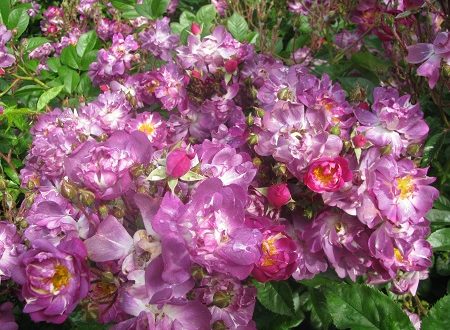

Join the Discussion
Type out your comment here:
You must be logged in to post a comment.